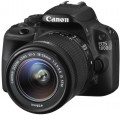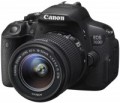DxOMark rating
The result shown by the camera in the DxOMark ranking.
DxOMark is one of the most popular and respected resources for expert camera testing. According to the test results, the camera receives a certain number of points; The more points, the higher the final score.
Focal length
Focal length of the camera lens.
Focal length is such a distance between the camera matrix and the optical center of the lens, focused at infinity, at which a clear and sharp image is obtained on the matrix. For models with interchangeable lenses (
mirrorless cameras and MILC, see “Camera Type”), this parameter is indicated if the camera is supplied with a lens (“kit”); Let us recall that, if desired, optics with other characteristics can be installed on such a camera.
The longer the focal length, the smaller the viewing angle of the lens, the higher the degree of approximation and the larger the objects visible in the frame. Therefore, this parameter is one of the key for any lens and largely determines its application (specific examples are given below).
Most often in modern digital cameras, lenses with a variable focal length are used: such lenses are able to zoom in and out of the image (for more details, see "Optical Zoom"). For "DSLRs" and MILC, specialized optics with a constant focal length (fixed lenses) are produced. But in digital compacts, "fixes" are used extremely rarely, usually such a lens is a sign of a high-end model with specific characteristics.
It should be borne in mind that the actual focal length of the lens is usually given in the characteristics of the camera. And the viewing angles and the general purpose of the optics are determined not only by this parameter, but also
...by the size of the matrix with which the optics are used. The dependence looks like this: at the same viewing angles, a lens for a larger matrix will have a longer focal length than a lens for a small sensor. Accordingly, only cameras with the same sensor size can be directly compared with each other in terms of lens focal length. However, to facilitate comparisons in the characteristics, the so-called. EGF - focal length in 35 mm equivalent: this is the focal length that a lens for a full frame matrix having the same viewing angles would have. You can compare by EGF lenses for any matrix size. There are formulas that allow you to independently calculate the equivalent of 35 mm, they can be found in special sources.
If we talk about a specific specialization, then the EGF up to 18 mm corresponds to ultra-wide-angle fisheye lenses. Wide-angle is considered "fixed" optics with EGF up to 28 mm, as well as vario lenses with a minimum EGF up to 35 mm. Values up to 60mm correspond to "general purpose" optics, 50 - 135mm are considered optimal for shooting portraits, and higher focal lengths are found in telephoto lenses. More detailed information about the specifics of various focal lengths can be found in special sources.Number of scene programs
The number of scene programs provided in the camera design.
Scene programs are preset settings for some of the most common shooting scenes - for example, Portrait, Landscape, Sports, Sunset, etc. In addition to these presets, this list may include special effects and creative tools (such as color swap or fisheye), as well as exposure modes (see below). The presence of scene programs is especially useful for beginners and non-professional photographers, as it eliminates the need to tinker with each setting separately - just select the most suitable program, and all the necessary settings will be set automatically. The more scene programs the camera design provides, the wider its automatic adjustment capabilities.
Frames per series (JPEG)
The highest number of shots a camera can capture “in one go” in JPEG continuous shooting.
The technical features of modern digital cameras are such that during continuous shooting, photos have to be recorded in a special buffer, and only then, after the end of the series, they can be copied to a memory card. This buffer has a limited size, so the number of frames in one series is also limited. At the same time, we note that this indicator is usually indicated for shooting at the highest possible resolution (see "Maximum image size"); at lower resolutions, the volume of each image is reduced, and the number of frames in the series may turn out to be more than stated in the specifications.
JPEG, the most popular digital photography format today, is smaller and requires less processing power than RAW (see "Recording in RAW Format"). Therefore, in a JPEG series, as a rule, more frames are available to the photographer. However, in some models that have two separate buffers (for RAW and JPEG), it may be the other way around.
Frames per series (RAW)
The highest number of shots the camera can capture “in one shot” when shooting in RAW format continuously (see “Recording in RAW Format”).
The technical features of modern digital cameras are such that during continuous shooting, photos have to be recorded in a special buffer, and only then, after the end of the series, they can be transferred to a memory card. This buffer has a limited size, so the number of frames in one series is also limited. At the same time, we note that this indicator is usually indicated for shooting at the highest possible resolution (see "Maximum image size"); at lower resolutions, the volume of each image is reduced, and the number of frames in the series may be more than stated in the specifications.
RAW images take up more space and require more processing power than "finished" JPEGs. Therefore, the number of frames in a series of this format is usually lower than that of JPEG. However, there are exceptions — usually these are cameras that have two separate buffers (for RAW and JPEG).
HDR
Camera support for
HDR.
HDR stands for High Dynamic Range. The main application of this technology is shooting scenes with significant differences in illumination, when there are both very bright and very dark areas in the frame. The features of modern digital photography are such that in the normal shooting mode, only a rather narrow range of brightness can be correctly processed; as a result, with a large difference in illumination, the image contains either too dark or overexposed fragments. HDR avoids this phenomenon: in this mode, the camera takes several shots with different exposure settings, and then glues them together in such a way as to reduce the brightness in bright places and increase in dark places. This allows you to shoot, for example, landscapes against the backdrop of a bright sunset sky, the interiors of dimly lit buildings with bright windows, etc. In addition, HDR can also be used as an artistic technique — to give the picture an unusual colour scheme.
Note that this effect can also be achieved using post-processing in a graphics editor; however, using the camera is much more convenient.
Video scene modes
The number and / or types of scene programs for shooting videos provided in the design of the camera.
Scene programs are a set of presets designed for different shooting situations - for example, in sunlight, on a cloudy day, in a darkened room, etc. Also, this list may include other specific modes - for example, creative tools. In any case, the presence of scene programs facilitates the choice of video shooting parameters, which is very useful for novice users.
Connection ports
— USB C. A universal USB interface that uses a Type C connector. USB ports themselves (all types) are used mainly for connecting the camera to a computer for copying footage, managing settings, updating firmware, etc. Specifically The Type C connector is comparable in size to earlier miniUSB and microUSB, but has a reversible design that allows the plug to be inserted in either direction. In addition, USB C often operates according to the USB 3.1 standard, which allows for connection speeds of up to 10 Gbps - a useful feature when copying large amounts of content.
-
HDMI. A comprehensive digital interface that allows you to transmit video (including high resolution) and audio (up to multi-channel) over a single cable. The presence of such a port makes it possible to use the camera as a player: it can be directly connected to a TV, monitor, projector, etc. and view your footage on the big screen. In this case, broadcast capabilities can include not only video playback, but also demonstration of captured photos in slide show mode. HDMI inputs are present in most modern video equipment, and connection is usually not a problem.
Nowadays, there are several versions of the HDMI interface on the market:
- v 1.4. The oldest version currently relevant, released in 2009. However, it supports 3D video, is capable of working with resolutions up to 4096x2160 at a speed of 24 fps, and in Full HD resolution the frame rate can reach 120...fps. In addition to the original v.1.4, there are also improved modifications - v.1.4a and v.1.4b; they are similar in basic capabilities, in both cases the improvements affected mainly work with 3D content.
- v2.0. Significant HDMI update introduced in 2013. In this version, the maximum frame rate in 4K has increased to 60 fps, and support for ultra-wide 21:9 format can also be mentioned. In update v.2.0a, HDR support was added to the interface capabilities; in v.2.0b this function was improved and expanded.
- v 2.1. Despite the similarity in name to v.2.0, this version, released in 2017, was a very large-scale update. In particular, it added support for 8K and even 10 K at speeds up to 120 fps, and also further expanded the capabilities for working with HDR. This version was released with its own cable - HDMI Ultra High Speed; all features of v.2.1 are available only when using cables of this standard, although basic functions can be used with simpler cords.
— Headphone output. Audio output allows you to connect headphones to the camera. As a rule, it is represented by a classic 3.5 mm mini-jack. The presence of such a connector provides the ability to monitor sound during video recording in real time. This is especially important when filming interviews, vlogs and other similar projects.
— Microphone input. Specialized input for connecting an external microphone to the camera. External microphones are significantly superior to built-in microphones in sound quality. Firstly, they are not so sensitive to the camera’s “own” sounds - from buttons, control wheels, focus motors, etc. (and if the microphone uses a long wire and is not attached to the body, these sounds will not be heard at all). Secondly, external microphones themselves have more advanced characteristics. On the other hand, their use is justified mainly for professional video recording; therefore, the presence of a microphone input, as a rule, corresponds to advanced video recording capabilities
Touch focus
The presence of the touch focus function in the design of the camera.
Such focus is necessarily combined with a touch screen (see below). It gives the photographer the opportunity to independently choose a point for focus in the frame being shot: for this, it is enough to touch this point on the image displayed on the screen.
Touch focus is extremely simple and intuitive, and therefore very convenient, especially for beginners and non-professional users.

